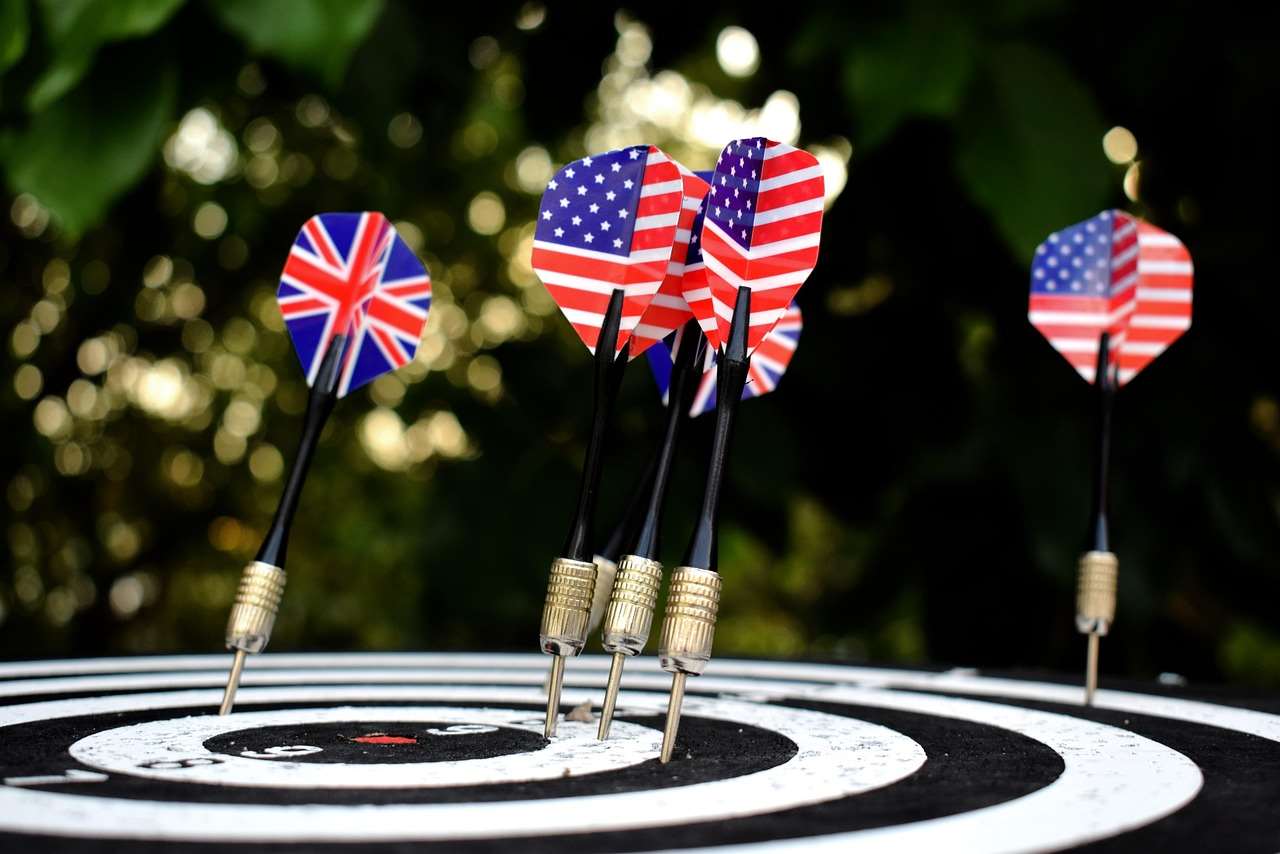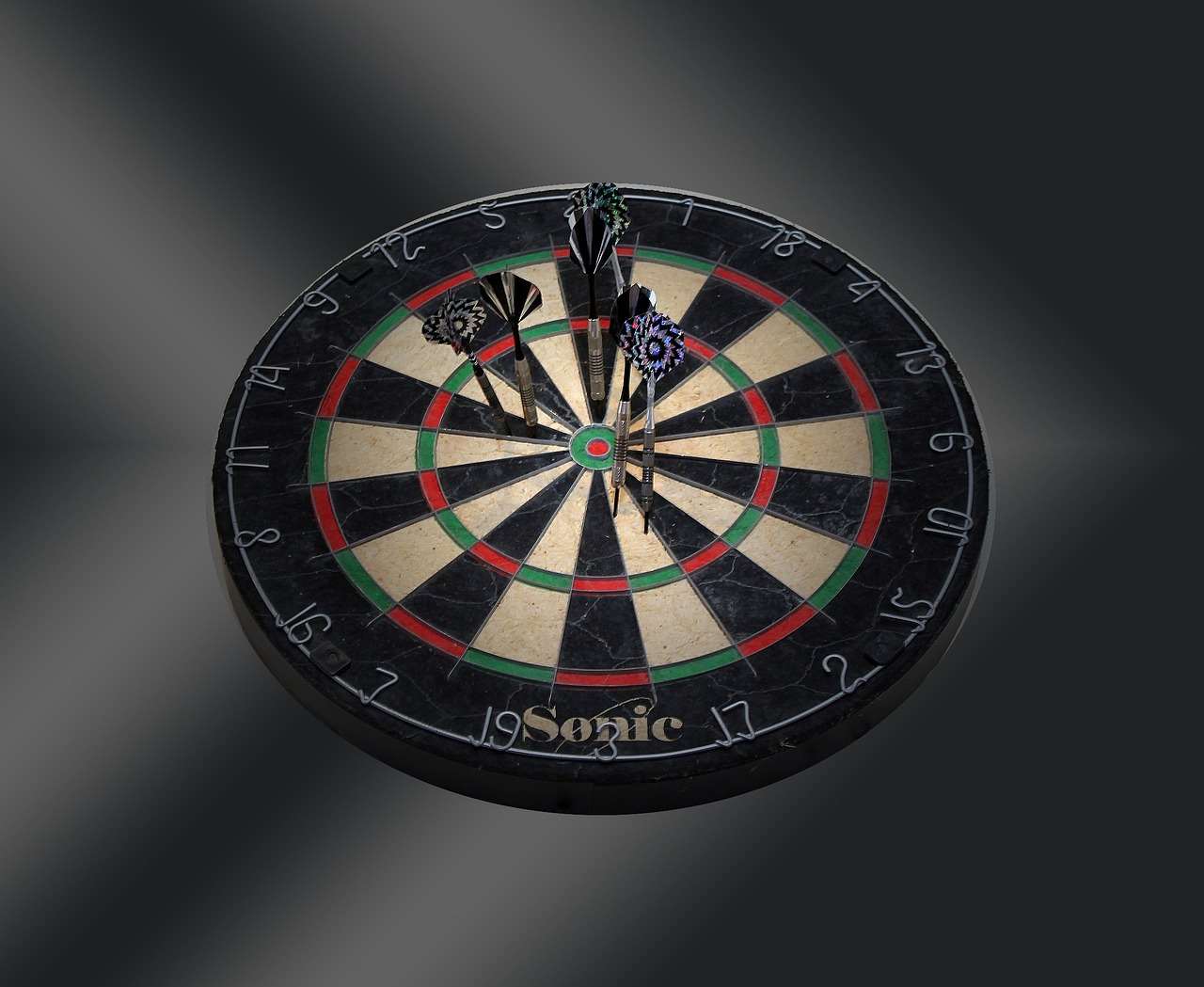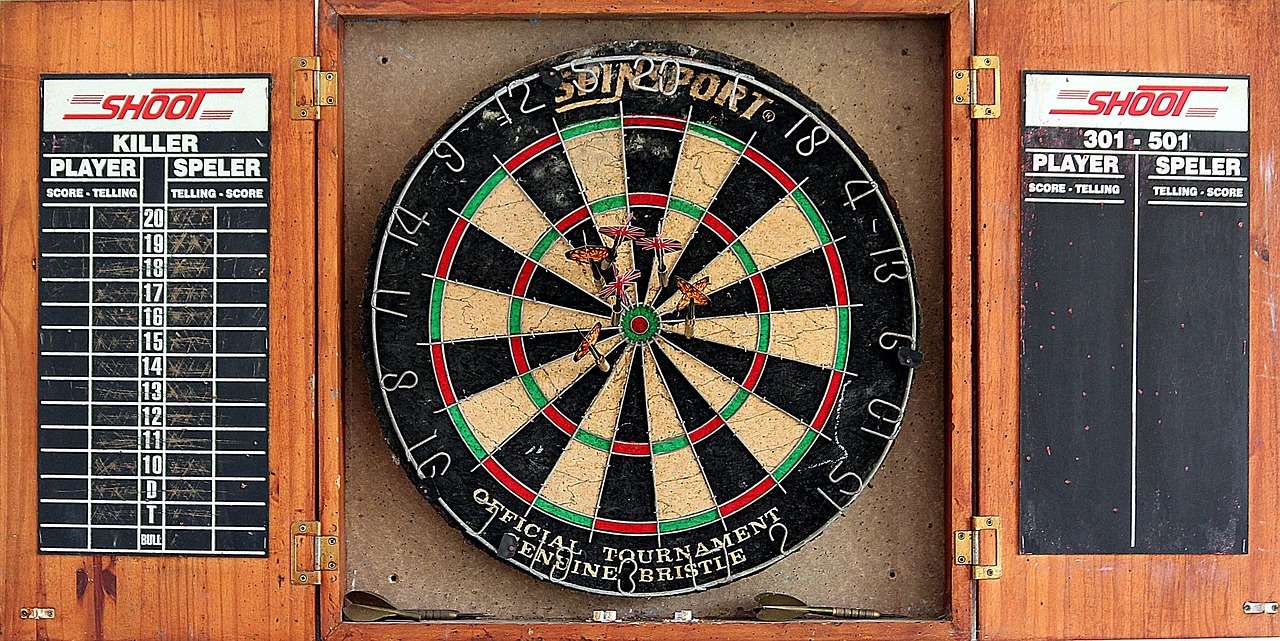The effect of adapted rules on dart strategy is profound, often requiring players to shift their focus from standard scoring targets like the treble 20 to more strategic placements dictated by the modified game. This article explores how specific rule changes impact gameplay, tactical decision-making, en uiteindelijk, a player’s success in various darting environments. We’ll delve into common adaptations, their strategic implications, and offer tips for adjusting your game accordingly.
⚠️ Still Using Pen & Paper (Of een schoolbord)?! ⚠️
Stap in de toekomst! De Dart Teller -app behandelt alle scoren, stelt kassa voor, en volgt uw statistieken automatisch. It's easier than you think!
Probeer de Smart Dart Teller -app gratis!Klaar voor een upgrade? Klik hierboven!
Understanding The Effect of Adapted Rules on Dart Strategy
Dart games are often adapted to suit different skill levels, available space, or simply to add variety and excitement. These rule adaptations can have a significant impact on the overall strategy required to win. When standard 501 regels are changed, players need to rethink their approach to scoring, checkout strategies, and even the psychology of the game.

One common adaptation is introducing handicap systems. These systems aim to level the playing field between players of different abilities. A stronger player might be required to start with a higher score or have certain scoring zones restricted, while a weaker player might receive a starting score advantage or bonus points for hitting specific targets. The strategic effect here is that the stronger player must focus on minimizing errors and consistently hitting high scores, while the weaker player can afford to take more risks, knowing they have a cushion.
Common Rule Adaptations and Their Strategic Impacts
Let’s examine some specific rule adaptations and their impact on dart strategy:
- Limited Darts: In deze variatie, each player might only get a limited number of darts per leg, inspraak, 9 of 12. This forces players to prioritize accuracy and high scores with every throw. Checkout strategies become even more crucial, and avoiding wasted darts is paramount. This creates a higher pressure environment than typical games, and players may need to shift focus from their ideal targets if they require more darts to set up.
- Restricted Scoring Zones: Imagine a rule that prohibits scoring on the treble 20. Suddenly, the entire game dynamic shifts. Players must adapt by targeting other high-scoring zones like the treble 19 or focusing on building a strong base score with consistent single or double hits. This requires a broader understanding of the dartboard and adaptability in target selection.
- Double-In/Double-Out Variations: While Double-In, Double-Out is common, further variations can be added, like requiring a Double-In, then only single numbers counted. This highly reduces a player’s initial score and forces very accurate throwing.
- Team Play with Modified Rules: In team darts, rules can be adapted to encourage collaboration and strategic partnerships. Bijvoorbeeld, a rule might require teammates to alternate hitting specific segments (Bijv., one player hits a treble, the other hits a double). This necessitates strong communication and coordinated planning.
- ‘Around the Clock’ Variations: Rules can alter the standard ‘Around the Clock’ game by introducing penalties for missing segments, such as having to go back to ‘1’. This amplifies the importance of accuracy and consistent hitting, and players need to weigh the risk of attempting a more difficult segment versus settling for an easier one.
Understanding these potential rule changes and practicing strategies for each significantly enhances a player’s overall game.
Strategic Adjustments for Handicap Systems
Handicap systems can range from simple point adjustments to complex rule modifications. Here’s how to adapt your strategy:
- For the Handicapped Player: Embrace the opportunity to be more aggressive. Knowing you have a point advantage allows you to take more risks on checkout attempts and aim for higher-scoring segments without the same pressure.
- For the Giving Player: Focus on consistency and minimizing errors. Avoid risky shots that could lead to wasted darts. A steady stream of solid scoring is often enough to overcome the handicap. Aim for higher averages and efficient checkout rates.
- Strategic Target Selection: Consider alternative targets when your favored zones are restricted. Practice your accuracy on the treble 19, bullseye, and other less-frequented areas of the board.

Adapting your game in these scenarios requires a mental shift as much as a technical one. Embrace the challenge and look for opportunities to exploit the nuances of the modified rules.
Adapting Dart Strategy for Small Spaces and Alternative Settings
Sometimes, you might be playing darts in a smaller-than-regulation space. Adapting darts rules for small spaces is crucial for maintaining safety and enjoyment. In these situations, strategies may need to be adjusted. A shorter oche (throwing line) will change the trajectory of your darts, and you might need to adjust your stance or throwing motion. Consider using lighter darts for better control in confined spaces.
Strategic Implications of a Shorter Oche
A shorter oche has several strategic implications:
- Reduced Trajectory: The darts will have a flatter trajectory, potentially increasing the likelihood of bounce-outs if your angle of approach isn’t precise.
- Increased Sensitivity to Movement: Small movements and inconsistencies in your throw become more pronounced over a shorter distance, making accuracy even more critical.
- Mental Adjustment: Players need to overcome the psychological impact of feeling “closer” to the board. This can lead to rushing throws or second-guessing your technique.

To counteract these effects, focus on:
- A Smooth, Controlled Release: Avoid jerky movements and maintain a consistent release point.
- A Stable Stance: Ensure your weight is balanced and your body is aligned correctly.
- Mental Focus: Visualize your target and block out distractions.
Fun Dart Game Variations and Modified Rules
Beyond standard 501 and Cricket, numerous fun dart game variations exist, often incorporating modified rules that demand different strategies. Examples include:
- Killer: Each player gets a number. You can only score on your own number. You have lives and lose them when other players hit your number. You can’t start scoring on your own number until you have hit the double of that number. This drastically alters your strategy; if somebody is scoring well, you need to be sure to knock them out!
- Shanghai: Players aim to score on consecutive numbers (1, 2, 3, etc.) in order. Hitting a single, double, or treble of the target number earns you points. The first player to “Shanghai” (hit a single, double, and treble of the same number in one turn) instantly wins. It’s beneficial to prioritize hitting the segments of each number equally.
- Around the World/Clock: As mentioned earlier, players aim to hit the numbers 1 through 20 in sequence. Variations include requiring doubles or trebles, adding penalties for misses, or introducing a time limit.
These variations often require a more flexible and adaptable strategy than standard games. They encourage experimentation, creativity, and a willingness to think outside the box. Don’t be afraid to try new things and develop your own unique approach to these fun and challenging games. Fun dart game variations with modified rules are a great way to practice adapting your throwing under different conditions.

How to Make Darts Fairer with Handicap Rules
As we’ve discussed, handicap rules are a vital tool for leveling the playing field in darts. How to make darts fairer with handicap rules often depends on the specific skill disparity between players. Simple point adjustments are effective for minor differences, while more significant disparities might require restrictions on scoring zones or alternative scoring systems.
Implementing Effective Handicap Systems
Here are some tips for implementing effective handicap systems:
- Assess Skill Levels: Accurately gauge the relative skill levels of the players involved. Consider their average scores, checkout percentages, and overall consistency.
- Start with Small Adjustments: Begin with minor point adjustments or restrictions and gradually increase the handicap until the game feels balanced.
- Be Flexible: Be willing to adjust the handicap based on the actual performance during the game. If the handicapped player is still struggling, provide additional support. If the stronger player is dominating, increase the handicap further.
- Communicate Clearly: Clearly explain the handicap rules to all players before the game begins. This prevents misunderstandings and ensures everyone is on the same page.
Gebruik Basic Darts Fundamentals for Beginners as a guide can also help players to improve and better adapt to different rules.
The Psychological Impact of Adapted Rules
It’s crucial to remember that the effect of adapted rules on dart strategy goes beyond mere mechanics; it also encompasses the psychological dimension. Rule changes can create added pressure, alter confidence levels, and influence decision-making. Bijvoorbeeld, playing with a limited number of darts can induce anxiety and lead to rushed throws, while having a handicap can boost a player’s confidence and encourage more aggressive play. Players facing modifying rules for mixed-level dart players should always be mentally prepared.
Maintaining Mental Toughness
To mitigate the negative psychological effects of adapted rules, focus on:
- Positieve zelfpraat: Encourage yourself and maintain a positive attitude, regardless of the situation.
- Visualisatie: Mentally rehearse successful throws and checkout attempts.
- Focus on the Process: Concentrate on executing your throwing technique correctly, rather than dwelling on the outcome.
- Embrace the Challenge: View rule adaptations as an opportunity to learn and grow as a dart player.

Uiteindelijk, mastering the psychological aspect of adapted rules is just as important as mastering the technical skills. By developing mental toughness and adaptability, you can thrive in any darting environment.
Conclusie
Conclusie, the effect of adapted rules on dart strategy is multifaceted and significant. From handicap systems and limited darts to restricted scoring zones and alternative game variations, rule changes can dramatically alter the dynamics of a dart game. To succeed in these environments, players must be adaptable, strategic, and mentally tough. By understanding the implications of different rule adaptations and developing the necessary skills to adjust their game accordingly, players can elevate their performance and enjoy the thrill of darts in all its varied forms. Now that you understand how rule changes can impact your game, why not experiment with some of these adaptations and see how they affect your own darting strategy? Practice makes perfect, and adaptability is key to becoming a well-rounded and successful dart player. Start experimenting with these strategies today!
Hoi, Ik ben Dieter, En ik heb Dartcounter gemaakt (Dartcounterapp.com). Mijn motivatie was geen darts -expert - helemaal tegenovergestelde! Toen ik voor het eerst begon te spelen, Ik hield van het spel, maar vond het moeilijk en afleidend om nauwkeurige scores te houden en statistieken te volgen.
Ik dacht dat ik niet de enige kon zijn die hiermee worstelde. Dus, Ik besloot om een oplossing te bouwen: een eenvoudig te gebruiken applicatie die iedereen, Ongeacht hun ervaringsniveau, zou kunnen gebruiken om moeiteloos te scoren.
Mijn doel voor Dartcounter was eenvoudig: Laat de app de nummers afhandelen - het scoren, de gemiddelden, de statistieken, Zelfs checkout suggesties - zodat spelers puur kunnen richten op hun worp en genieten van het spel. Het begon als een manier om het probleem van mijn eigen beginners op te lossen, En ik ben heel blij dat het is uitgegroeid tot een nuttig hulpmiddel voor de bredere darts -community.